- The Benefits of Chinese Blue Alps Juniper for Boosting Plant Growth with Mycorrhiza
- What is Mycorrhiza?
- How Chinese Blue Alps Juniper Boosts Plant Growth with Mycorrhiza
- The Benefits of Chinese Blue Alps Juniper with Mycorrhiza for Other Plants
- Conclusion
- Understanding Mycorrhiza and its Role in Plant Growth
- Types of Mycorrhiza:
- Benefits of Mycorrhiza:
- Application of Mycorrhiza in Agriculture:
- Benefits of Growing Chinese Blue Alps Juniper with Mycorrhiza
- Enhanced Nutrient Absorption
- Improved Drought Tolerance
- Increased Disease Resistance
- Enhanced Growth and Vigor
- Environmental Sustainability
- Conclusion
- How Mycorrhiza Enhances Nutrient Uptake in Chinese Blue Alps Juniper
- Increased Nutrient Absorption
- Enhanced Nutrient Cycling
- Improved Tolerance to Stress
- Overall Plant Growth and Health
- Improving Water Absorption and Drought Resistance with Mycorrhiza
- How Mycorrhiza Enhances Water Absorption
- Drought Resistance and Mycorrhiza
- Field Studies and Practical Applications
- Conclusion
- Strengthening Root System and Preventing Soil Erosion
- Boosting Plant Growth and Enhancing Flowering with Mycorrhiza
- Improved Nutrient Uptake:
- Increased Water Absorption:
- Enhanced Plant Health:
- Promotion of Flowering:
- Application and Benefits:
- Questions and Answers:
- What is the Chinese Blue Alps Juniper plant?
- How does mycorrhiza help in boosting plant growth?
- What are the benefits of using mycorrhiza in gardening?
- Can mycorrhiza be used on other plants besides the Chinese Blue Alps Juniper?
- How can I use mycorrhiza on my plants?
- Where can I buy mycorrhiza for my plants?
- Are there any precautions or guidelines to follow when using mycorrhiza?
- Videos: The Secrets of Growing Giant Vegetables
Chinese Blue Alps Juniper, also known as Juniperus chinensis ‘Blue Alps’, is a versatile and beautiful evergreen shrub or small tree that can enhance any garden or landscape. With its striking blue-green foliage and graceful, upright growth habit, it is a popular choice among gardeners and landscapers.
But did you know that Chinese Blue Alps Juniper can benefit from a symbiotic relationship with mycorrhiza? Mycorrhiza is a symbiotic association between the roots of plants and fungi, where both parties benefit. The fungi form a network of filaments that extend the reach of the plant’s root system, increasing its ability to absorb water and nutrients from the soil.
Mycorrhiza can greatly improve the growth and overall health of Chinese Blue Alps Juniper. The fungi help the plant to take up phosphorus, an essential nutrient for healthy root development and overall plant growth. This can result in more vigorous growth, increased resistance to stress, and improved tolerance to drought conditions.
Furthermore, mycorrhiza can also enhance the plant’s ability to uptake other nutrients, such as nitrogen and potassium, leading to better overall nutrient uptake efficiency. This can result in improved plant vigor, increased flower and fruit production, and a healthier, more vibrant appearance.
So, if you want to maximize the growth and health of your Chinese Blue Alps Juniper, consider incorporating mycorrhiza into your planting routine. By promoting a symbiotic relationship between the plant’s roots and beneficial fungi, you can enjoy a more vibrant and resilient plant that will thrive in your garden or landscape.
The Benefits of Chinese Blue Alps Juniper for Boosting Plant Growth with Mycorrhiza
Chinese Blue Alps Juniper is a species of juniper native to China. This plant has gained popularity among gardeners and landscapers due to its ability to boost plant growth with mycorrhiza.
What is Mycorrhiza?
Mycorrhiza is a symbiotic relationship between certain fungi and the roots of plants. The fungi form a mutually beneficial association with the plant roots, helping them absorb nutrients and water from the soil.
How Chinese Blue Alps Juniper Boosts Plant Growth with Mycorrhiza
Chinese Blue Alps Juniper is known to host arbuscular mycorrhizal fungi (AMF) in its root systems. These fungi establish a symbiotic relationship with the juniper, enhancing its ability to absorb nutrients and water from the soil.
- The AMF extend their hyphae, or fungal threads, into the soil, increasing the surface area for nutrient absorption.
- This extended surface area allows the juniper’s root system to access a larger pool of nutrients, promoting healthier and more vigorous growth.
- Mycorrhizal fungi also produce enzymes that break down organic matter in the soil, releasing nutrients that are otherwise inaccessible to plants.
- Furthermore, the fungus forms a protective barrier around the juniper’s roots, shielding them from pathogenic organisms and enhancing their overall health.
The Benefits of Chinese Blue Alps Juniper with Mycorrhiza for Other Plants
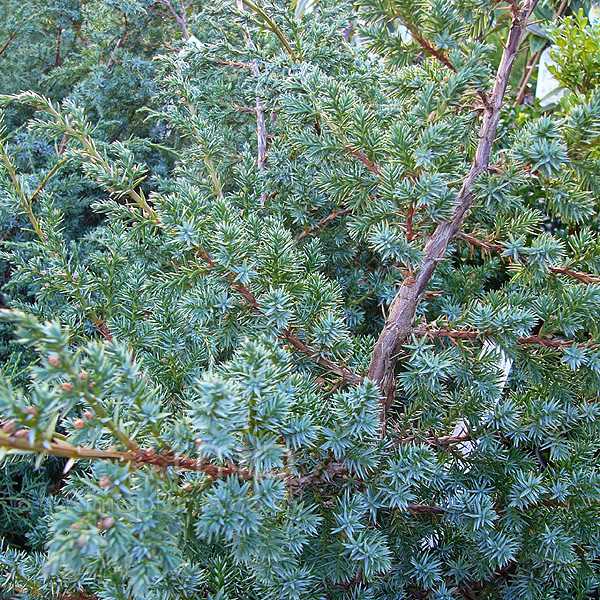
The presence of mycorrhizal fungi in the root systems of Chinese Blue Alps Juniper can also benefit other plants growing in close proximity.
When mycorrhizal fungi colonize the juniper’s roots, they extend their network of hyphae into the surrounding soil, reaching out to the roots of neighboring plants. This allows these plants to also benefit from the increased nutrient absorption and protection provided by the fungi.
Conclusion
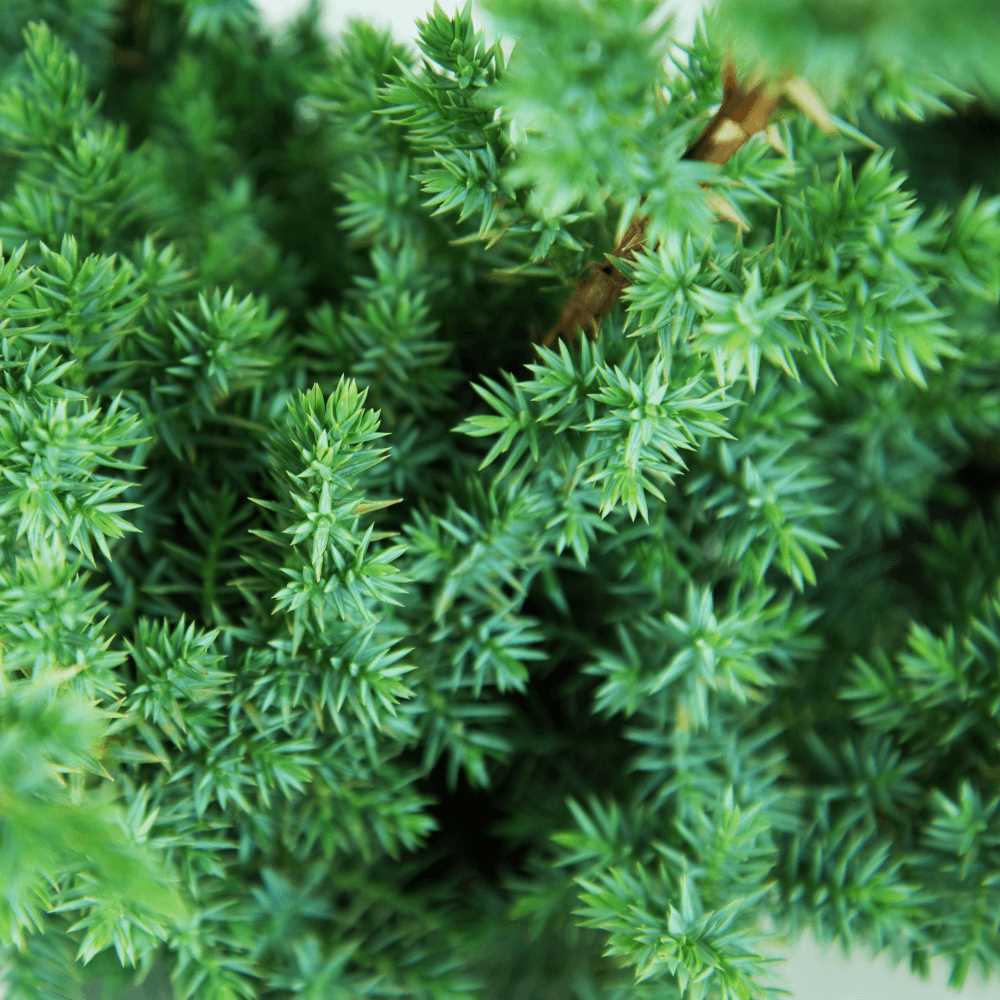
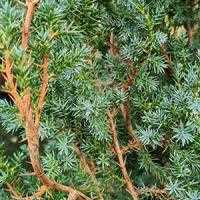
Chinese Blue Alps Juniper has proven to be a valuable addition to gardens and landscapes, not only for its aesthetic appeal but also for its ability to enhance plant growth with mycorrhiza. By hosting arbuscular mycorrhizal fungi in its root systems, this juniper species improves nutrient uptake, protects roots, and promotes overall plant health. Whether used as a standalone plant or as part of a mixed landscape, Chinese Blue Alps Juniper can contribute to the success and vitality of surrounding vegetation.
Understanding Mycorrhiza and its Role in Plant Growth
Mycorrhiza is a mutually beneficial symbiotic association between fungi and plants. This symbiotic relationship plays a crucial role in plant growth and development by enhancing nutrient uptake and promoting overall plant health.
Types of Mycorrhiza:
- Endomycorrhiza (Arbuscular Mycorrhiza): This type of mycorrhiza is the most prevalent in terrestrial ecosystems. It forms a symbiotic relationship with over 80% of plant species, including trees, shrubs, and crops. The fungi penetrate the roots of the plant and form structures called arbuscules, which serve as sites for nutrient exchange between the plant and fungi.
- Ectomycorrhiza: Ectomycorrhiza forms a mutualistic association between fungi and certain tree species, such as pines, spruces, and oaks. In this association, the fungi form a sheath around the roots and hyphae extend into the soil, enhancing nutrient uptake and protecting the plant from pathogens.
Benefits of Mycorrhiza:
- Increased Nutrient Uptake: Mycorrhizal fungi have the ability to extend their hyphae into the soil, reaching far beyond the root system of the plant. This allows them to extract nutrients, such as phosphorus, nitrogen, and trace elements, from a larger soil volume, which would otherwise be inaccessible to the plant.
- Enhanced Water Absorption: Mycorrhizal fungi also improve the water absorption capacity of plants. The extensive fungal hyphae act as a network, absorbing water from a larger soil volume and transferring it to the plant roots. This helps plants survive drought conditions and reduces the need for irrigation.
- Improved Resistance to Soil Pathogens: Mycorrhizal association can provide plants with resistance against soil-borne pathogens. The fungi form a protective barrier around the root system, preventing harmful pathogens from attacking the plant. They also produce antimicrobial compounds that inhibit the growth of pathogenic microorganisms.
- Stimulated Plant Growth: Mycorrhizal fungi can promote plant growth by secreting growth-promoting substances, such as hormones and enzymes. These substances stimulate root development, increase nutrient absorption, and enhance overall plant vigor.
Application of Mycorrhiza in Agriculture:
The understanding of mycorrhiza and its role in plant growth has led to its application in agricultural practices. Many commercial products containing mycorrhizal inoculants are available, which can be applied to seedlings, transplants, or directly to the soil. These inoculants introduce beneficial mycorrhizal fungi to enhance nutrient uptake, improve crop yield, and reduce the need for chemical fertilizers.
| Product Name | Type of Mycorrhiza | Application Method |
|---|---|---|
| MycorMax | Endomycorrhiza | Mix with soil or apply to roots during planting |
| RootShield | Ectomycorrhiza | Apply as a drench or incorporate into potting mix |
| MycoApply | Endo- and Ectomycorrhiza | Coat seeds or apply as a root dip before planting |
By harnessing the power of mycorrhizal associations, farmers and gardeners can enhance plant growth, improve soil health, and reduce the environmental impacts of conventional agricultural practices.
Benefits of Growing Chinese Blue Alps Juniper with Mycorrhiza
The Chinese Blue Alps Juniper is a beautiful evergreen shrub that is highly valued for its stunning blue-green foliage. When cultivated with the help of mycorrhiza, this plant can experience several benefits that enhance its growth and health.
Enhanced Nutrient Absorption
Mycorrhiza forms a symbiotic relationship with the roots of the Chinese Blue Alps Juniper, creating a network of filaments that extend the root system. This network significantly increases the surface area available for nutrient absorption, allowing the plant to take up a greater quantity of essential nutrients from the soil.
Improved Drought Tolerance
Mycorrhiza also enhances the water-holding capacity of the soil by creating a network of filaments that can reach areas that are difficult for plant roots to access. This helps the Chinese Blue Alps Juniper to withstand periods of drought by improving its ability to capture and retain water, reducing the stress on the plant during dry spells.
Increased Disease Resistance
The symbiotic relationship between mycorrhiza and the Chinese Blue Alps Juniper also helps to enhance the plant’s defense against various diseases. Mycorrhiza can stimulate the plant’s immune system, making it more resistant to pathogens and reducing the likelihood of disease development.
Enhanced Growth and Vigor
By facilitating nutrient uptake, improving drought tolerance, and increasing disease resistance, mycorrhiza plays a crucial role in promoting the overall growth and vigor of the Chinese Blue Alps Juniper. The plant will be better equipped to withstand environmental stresses and will exhibit healthier foliage and stronger root development.
Environmental Sustainability
Growing Chinese Blue Alps Juniper with mycorrhiza also has environmental benefits. The symbiotic relationship between the plant and mycorrhiza reduces the need for synthetic fertilizers, as the plant can better access and utilize nutrients naturally present in the soil. This promotes sustainable gardening practices and reduces the environmental impact of plant cultivation.
Conclusion
Growing Chinese Blue Alps Juniper with mycorrhiza offers numerous benefits, including enhanced nutrient absorption, improved drought tolerance, increased disease resistance, enhanced growth and vigor, and environmental sustainability. By harnessing the power of this symbiotic relationship, gardeners can cultivate healthier, more robust Chinese Blue Alps Juniper plants.
How Mycorrhiza Enhances Nutrient Uptake in Chinese Blue Alps Juniper
Mycorrhiza is a mutually beneficial association between plant roots and fungal hyphae. In the case of Chinese Blue Alps Juniper, this symbiotic relationship plays a crucial role in enhancing nutrient uptake and overall plant growth. Here’s how mycorrhiza benefits this particular plant species:
Increased Nutrient Absorption
The fungal hyphae of mycorrhizal fungi extend the root surface area of Chinese Blue Alps Juniper, allowing it to explore a larger volume of soil. These hyphae can penetrate soil aggregates, microscopic pores, and even organic matter, accessing nutrients that would otherwise be inaccessible to the plant’s roots alone.
The mycorrhizal fungi release enzymes that break down organic matter, such as decaying plant material, into simpler forms that the plant can absorb. This breakdown process releases essential nutrients, making them available for uptake by the plant.
Enhanced Nutrient Cycling
The mycorrhizal association also enhances nutrient cycling in the ecosystem. As the Chinese Blue Alps Juniper absorbs nutrients from the soil through its mycorrhizal fungi, it simultaneously releases organic compounds, such as sugars and amino acids, into the soil. These compounds are utilized by other microorganisms, promoting a healthy soil microbiome.
Additionally, mycorrhizal fungi have the ability to store nutrients within their hyphae, protecting them from leaching or being washed away by heavy rains. This nutrient storage capacity ensures a steady supply of nutrients for the Chinese Blue Alps Juniper, even during periods of nutrient scarcity.
Improved Tolerance to Stress
Mycorrhizal associations have been shown to enhance the stress tolerance of plants, including Chinese Blue Alps Juniper. The presence of mycorrhizal fungi can increase the plant’s resistance to abiotic stresses, such as drought, high salinity, and extreme temperatures.
During times of stress, mycorrhizal fungi can extend their hyphae deeper into the soil, accessing water and nutrients that are further away from the plant’s roots. This helps alleviate plant stress by ensuring a constant supply of essential resources, even in challenging environmental conditions.
Overall Plant Growth and Health
By improving nutrient absorption, enhancing nutrient cycling, and increasing stress tolerance, the mycorrhizal association significantly contributes to the overall growth and health of Chinese Blue Alps Juniper. Plants that form mycorrhizal associations have been observed to exhibit increased shoot and root biomass, improved nutrient utilization efficiency, and higher resistance to various diseases and pests.
Therefore, ensuring the presence of mycorrhizal fungi in the soil is crucial for optimizing the growth and well-being of Chinese Blue Alps Juniper.
Improving Water Absorption and Drought Resistance with Mycorrhiza
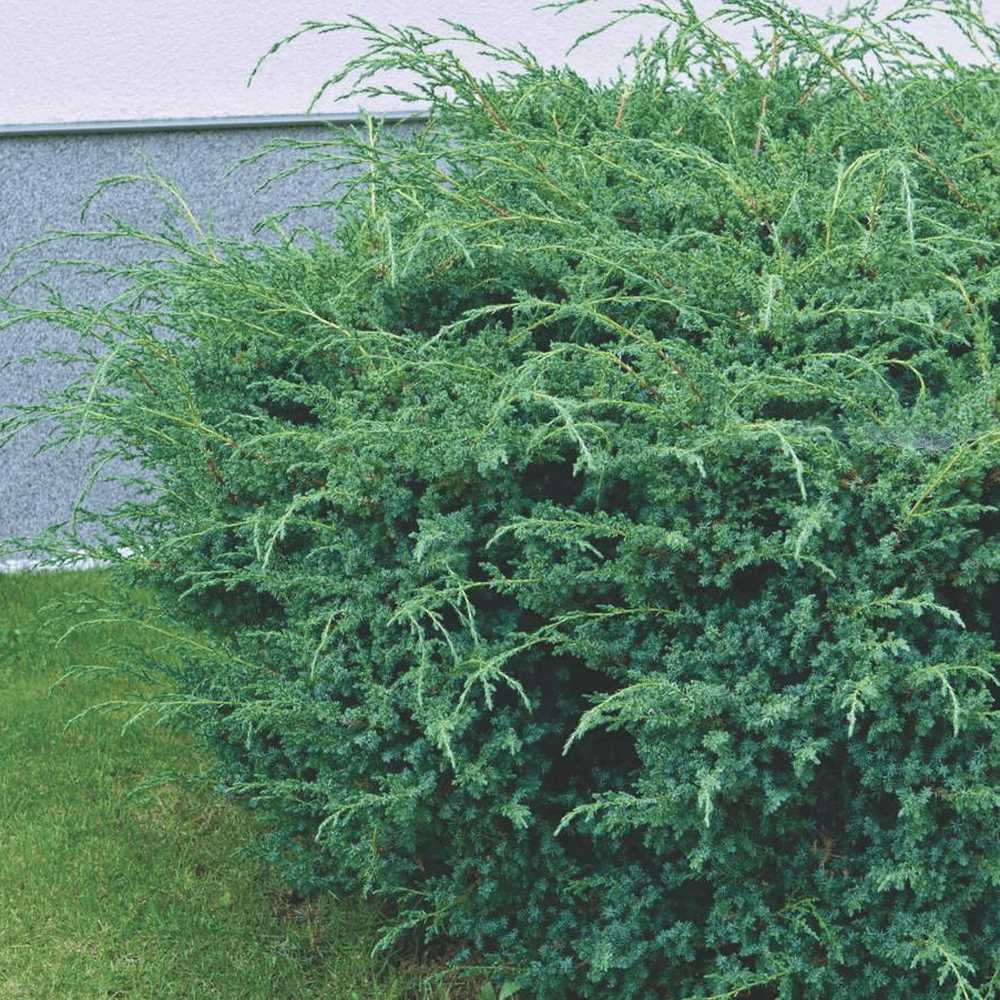
Mycorrhiza is a beneficial symbiotic relationship between a fungus and the roots of plants. This symbiosis has been shown to significantly improve water absorption and drought resistance in plants, making it a valuable tool for boosting plant growth in dry or arid environments.
How Mycorrhiza Enhances Water Absorption

One of the main ways mycorrhiza improves water absorption is through its extensive network of hyphae, which are tiny filaments that extend from the fungal partner into the surrounding soil. These hyphae can penetrate small pores and crevices in the soil, increasing the surface area available for water absorption.
In addition to physically increasing the area for water absorption, mycorrhiza also enhances the plant’s ability to extract water from the soil. The fungal partner in the symbiosis produces enzymes that break down complex organic compounds in the soil, releasing nutrients and making them more available to the plant. This process, known as mineralization, can also free up water molecules bound to these organic compounds, allowing the plant to access previously unavailable water sources.
Drought Resistance and Mycorrhiza
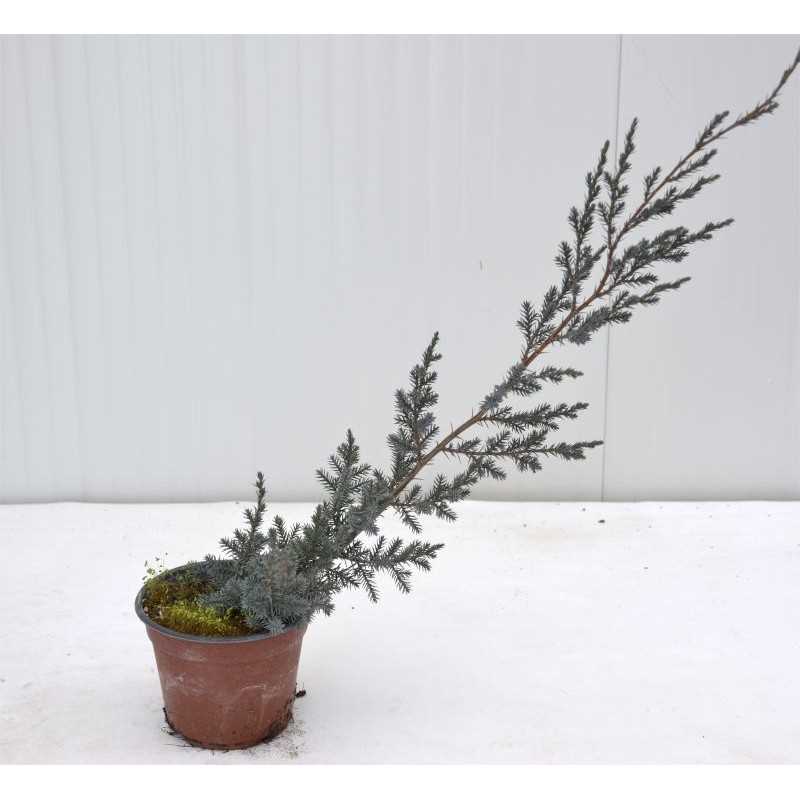
Mycorrhiza plays a crucial role in improving the drought resistance of plants. The hyphae of the fungal partner act as a protective network, forming a physical barrier against water loss from the roots. This barrier helps to reduce transpiration, the process by which plants lose water through their leaves.
Furthermore, mycorrhiza enhances the plant’s ability to regulate water uptake and retention. The symbiotic relationship between the fungus and the plant allows for better control and allocation of water resources, helping the plant to adapt and withstand periods of drought.
Field Studies and Practical Applications
Field studies have shown promising results in using mycorrhiza to improve water absorption and drought resistance in a variety of crops and plant species. For example, researchers have found that mycorrhizal inoculation increased the water uptake efficiency of citrus trees during drought conditions, resulting in improved growth and yield.
The practical application of mycorrhiza in agriculture includes inoculating plant roots with mycorrhizal fungi or adding mycorrhizal spores to the soil. These methods can be effective in enhancing water absorption and drought resistance, particularly in dry or water-limited environments.
Conclusion
Mycorrhiza is a powerful tool for improving water absorption and drought resistance in plants. The symbiotic relationship between the fungus and the plant enhances the plant’s ability to extract water from the soil, reduces water loss through transpiration, and improves the plant’s ability to regulate water uptake and retention.
By harnessing the benefits of mycorrhiza, we can help plants thrive in water-limited environments and contribute to sustainable agriculture practices.
Strengthening Root System and Preventing Soil Erosion
The Chinese Blue Alps Juniper is a plant known for its ability to thrive in rocky and poor soil conditions. One of the factors that contribute to its hardiness is its well-developed root system. The roots of the Chinese Blue Alps Juniper are known for their ability to penetrate deep into the soil, enabling the plant to access water and nutrients that are not readily available in the upper layers of the soil.
By boosting the growth of the Chinese Blue Alps Juniper using mycorrhiza, we can further enhance the development of its root system. Mycorrhiza is a symbiotic association between a fungus and the roots of a plant. The fungus forms a network of hyphae that extends the reach of the root system, increasing the plant’s ability to absorb nutrients and water from the surrounding soil.
In addition to strengthening the root system, mycorrhiza also plays a role in preventing soil erosion. The hyphae of the fungus form a dense network that binds the soil particles together, reducing the risk of erosion caused by wind or water. This is particularly important in areas with steep slopes or loose soil, where erosion can be a major problem.
Furthermore, the presence of mycorrhiza in the soil improves its structure and fertility. The hyphae create pores and channels that allow air and water to penetrate the soil more easily, promoting better drainage and aeration. This, in turn, creates a more favorable environment for the growth of beneficial soil microorganisms, which contribute to the overall health of the soil ecosystem.
To maximize the benefits of mycorrhiza, it is important to ensure that the Chinese Blue Alps Juniper is planted in suitable soil conditions. The soil should be well-drained to prevent waterlogging, but at the same time, it should retain enough moisture to support the growth of the fungus. Additionally, it is recommended to avoid the use of chemical fertilizers and pesticides, as these can disrupt the delicate balance of the symbiotic relationship between the plant and the fungus.
| Benefit | Description |
|---|---|
| Enhanced root development | The fungus extends the reach of the root system, enabling better absorption of nutrients and water. |
| Soil erosion prevention | The dense network of fungal hyphae binds soil particles together, reducing the risk of erosion. |
| Improved soil structure and fertility | The hyphae create pores and channels that enhance drainage, aeration, and the growth of beneficial microorganisms. |
Boosting Plant Growth and Enhancing Flowering with Mycorrhiza
Mycorrhiza, a symbiotic association between plant roots and certain fungi, can greatly enhance plant growth and flowering. This mutually beneficial relationship between the fungus and the plant roots improves nutrient uptake, water absorption, and overall plant health.
Improved Nutrient Uptake:
Mycorrhizal fungi form a network of fine hyphae that extend into the soil, greatly increasing the surface area for nutrient absorption. This network acts as an extension of the plant’s root system, reaching areas that the roots cannot access alone. The fungi can extract nutrients such as phosphorus and nitrogen from the soil and deliver them directly to the plant roots. This enhanced nutrient uptake promotes vigorous plant growth and development.
Increased Water Absorption:
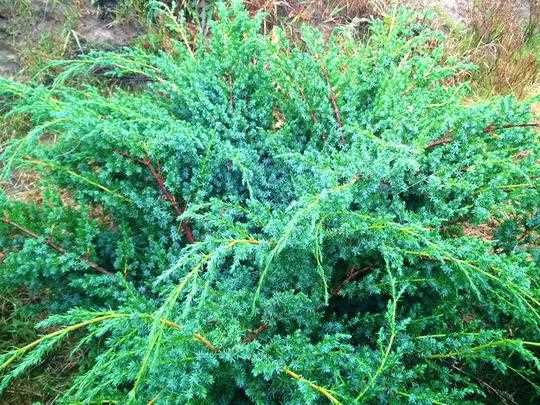
The hyphal network created by mycorrhizal fungi also improves water absorption in plants. The fine hyphae can explore the soil for water and effectively transport it to the roots, reducing water stress in plants. This is particularly beneficial in drought-prone areas where water availability is limited. By improving water absorption, mycorrhiza helps plants survive and thrive in challenging conditions.
Enhanced Plant Health:
Mycorrhiza provides several benefits that contribute to overall plant health. The fungi can form a protective barrier around the plant roots, reducing the risk of pathogen attack. They can also help plants tolerate environmental stressors such as high temperatures, salinity, and heavy metal contamination. By improving the plant’s ability to withstand stress, mycorrhiza enhances overall plant health and vitality.
Promotion of Flowering:
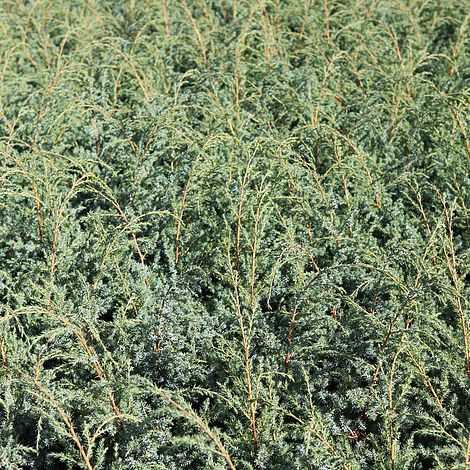
Many plants require specific conditions to initiate flowering. Mycorrhizal fungi can play a role in promoting flowering by improving nutrient availability and reducing plant stress. They help the plant acquire the necessary nutrients for flower development and support the plant’s overall health, creating optimal conditions for flowering. This can result in more abundant and vibrant flowers.
Application and Benefits:
Mycorrhizal inoculants containing spores of beneficial fungi can be applied during planting to establish the symbiotic relationship between the fungi and plant roots. This application method can improve plant growth, flowering, and yield in various agricultural, horticultural, and landscaping practices. By harnessing the power of mycorrhiza, growers and gardeners can boost plant performance and achieve healthier, more vibrant plants.
Questions and Answers:
What is the Chinese Blue Alps Juniper plant?
The Chinese Blue Alps Juniper plant, also known as Juniperus chinensis ‘Blue Alps’, is a species of evergreen shrub that belongs to the cypress family.
How does mycorrhiza help in boosting plant growth?
Mycorrhiza is a symbiotic association between fungi and plant roots. The mycorrhizal fungi form a network of hyphae around the roots, which helps in increasing the absorption of nutrients and water from the soil, thus boosting the plant growth.
What are the benefits of using mycorrhiza in gardening?
Using mycorrhiza in gardening has several benefits. It improves nutrient uptake, enhances plant growth, increases resistance to diseases and pests, improves soil structure, and promotes better water absorption.
Can mycorrhiza be used on other plants besides the Chinese Blue Alps Juniper?
Yes, mycorrhiza can be used on a wide range of plants. It is beneficial for most plants as it enhances their growth and provides various other benefits such as nutrient uptake and disease resistance.
How can I use mycorrhiza on my plants?
Mycorrhiza can be applied to plants by mixing it with the soil during planting, or by applying it as a root drench solution. It is also available in the form of granules that can be sprinkled in the planting hole.
Where can I buy mycorrhiza for my plants?
Mycorrhiza can be purchased from garden centers, plant nurseries, and online gardening stores. It is available in various forms such as powder, granules, and liquid.
Are there any precautions or guidelines to follow when using mycorrhiza?
It is important to follow the instructions provided by the manufacturer when using mycorrhiza. It is also recommended to store it in a cool, dry place and to avoid overusing it, as excessive use may have negative effects on plant growth.







